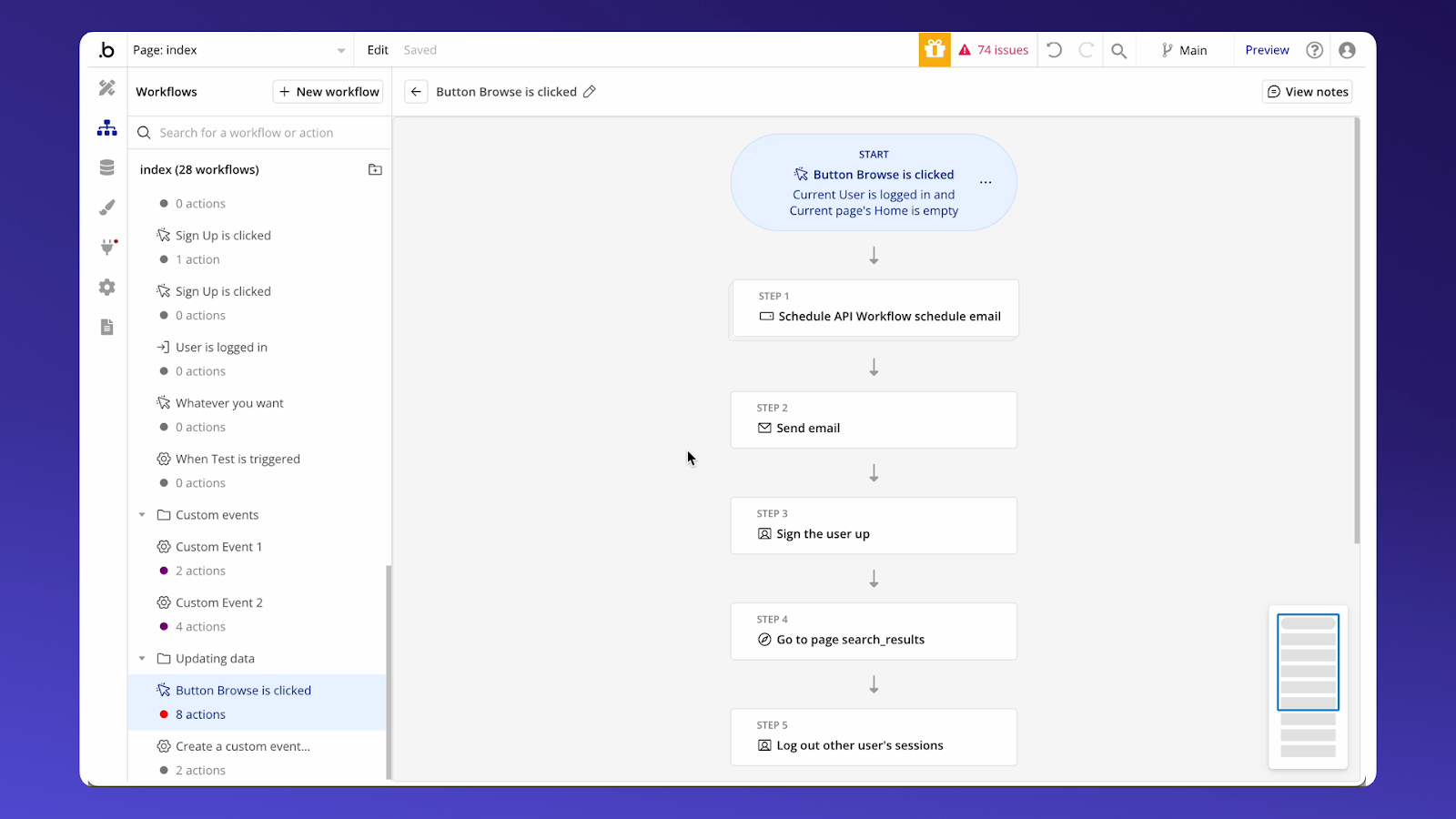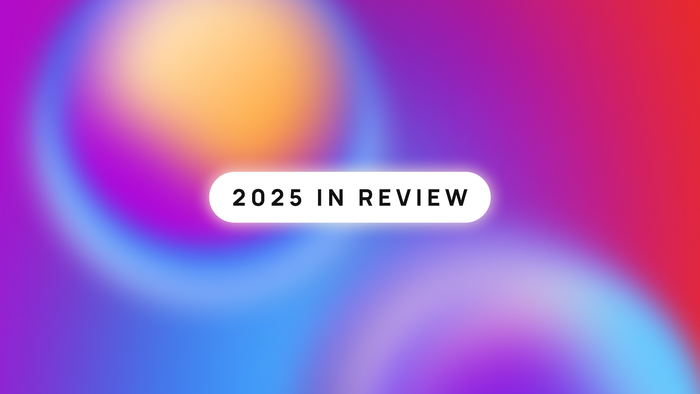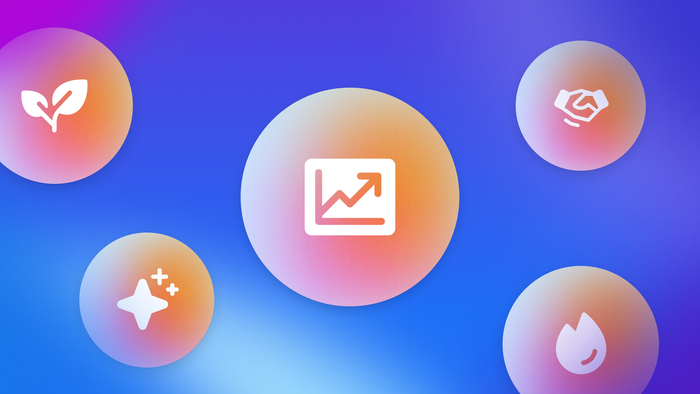BubbleCon 2024 (happening October 1–2) brought together Bubblers from all over the world, both virtually and in person. In their opening keynote, co-founders Josh and Emmanuel talked about how far the Bubble community has come — and where we’re headed.
If you’ve got a few minutes, watch the replay. If skimming is more your style, scroll below for the most important highlights.
How far Bubble has come
Bubble has powered three million builders to create 4.69 million apps across 217 countries. And we’ve kept growing, too — pushing past what people thought no-code was capable of.
Among the millions of apps built, Josh and Emmanuel highlighted a few that have exemplified the power of Bubble:
- Hive Health, a digital platform that provides users with affordable health plans in the Philippines. Their two-person team used Bubble to scale more than 60 people and raise $6.5 million in funding.
- Voicepen.ai, an app that instantly converts audio and video into text for content repurposing, built and launched their Bubble app in less than a month.
- Scious, which streamlines Bubble plugin development by making it easier to organize and maintain complex plugins in developer environments like VS Code.
- Ringly, which uses AI to analyze user behavior and deliver personalized product recommendations, has 500 users, and recently landed at the top of Product Hunt.
As Emmanuel noted, “This is more than just growth. It’s a testament to how the world is changing and the new ways that technology is getting created.”
This year, Josh and Emmanuel shared new ways we’re making no-code development on Bubble more powerful than ever — so you can keep growing, building, and innovating.
Bubble for native mobile apps
Today, developers are faced with a tough choice: Do you pick a stack built for mobile development or web? Or do you spend millions on developing each separately? At Bubble, we think you shouldn’t compromise. With our latest release, you can have both on one stack.
On a rolling basis, we’re taking users off the waitlist to test out the beta for native mobile apps. This tool lets you build a mobile app on Bubble using the same database and backend as your web app.
That means you can now not only build an iOS and Android-ready app faster than ever, but create even higher-quality apps, too — they’ll seamlessly integrate with your phone’s push notifications, and offer native mobile gestures (like swipe actions!)
Here’s what the future of mobile app development looks like:
A new workflow tab
The Bubble editor is powerful, and allows you to build “nearly anything you can imagine,” says Josh. We’re doubling down to make it more intuitive for beginners and lightning-fast for experienced Bubblers. The next milestone in that transformation launches today: The new workflow tab is officially in opt-in beta.
The simpler UX means you can build powerful workflows more easily. Here’s what’s new:
- Folders: Now a core part of the interface, folders let you group related workflows more efficiently
- Workflow views: Switch between viewing workflows by folder or event types like pages or button clicks with a new “View as” feature
- Improved navigation: We’ve introduced a new back button, hover cards that show key workflow details like event name and conditional, and a URL-sharing feature to simplify navigation and collaboration
To try it out, go to your app’s version tab and select Redesigned Workflow Editor under the beta features section.

Out-of-the-box security with Flusk
We’re excited to announce that we’re bringing Flusk into the Bubble family to make no-code more trustworthy, scalable, and robust for everyone. Flusk is an enterprise-grade security tool founded by last year’s Bubble Trailblazer award winners Victor Nihoul and Wesley Wasielewski — two people who are “going to bring a unique combination of passion and product vision to Bubble,” noted Emmanuel.
Built specifically to integrate with Bubble apps, Flusk automates security audits across over 20 critical checkpoints, like data leaks and API workflow protection. It generates instant reports to help you identify and address any vulnerabilities quickly. It also has real-time error and bug monitoring, so it’s easy to keep your app running without disruptions. Flusk includes simple manual testing to help you find and fix deeper security issues if you need to — no technical expertise required.
We’re excited to announce that Bubble has acquired @FluskEU. This is a big step in our commitment to providing unparalleled security, reliability, and peace of mind for the Bubble community.
— Bubble (@bubble) October 1, 2024
Read more about this announcement 👇https://t.co/M0PQw8uVWB
“Flusk has built a fantastic product on Bubble,” said Emmanuel. “Not to mention that they were able to accomplish this with just the two founders over the span of a couple of years.” With Flusk on Bubble’s platform, both early-stage founders and scaling startups can focus on building and scaling their products while knowing their apps are secure, compliant, and reliable.
AI for Day 2
Bubble was built on the promise of simplicity. That’s why pairing Bubble with AI — a technology that founders everywhere are using to bring their products to market in record time — felt like a natural fit. But we know AI alone isn’t enough: It builds a cool first draft, but then what? You’re stuck trying to navigate a big block of code you used AI to try to avoid. Then, you’re stuck trying to fix all the bugs in the traditional code.
“There are some very, very cool day-one demos of users typing in a sentence and the tool spitting out the code for a working app,” said Josh. “But listen carefully to those demos and notice what they aren’t talking about. They aren’t talking about day two.”
Bubble is putting an end to this. In November, builders will get access to our new AI builder. You’ll be able to type instructions in your own words into Bubble and immediately receive a fully functional app — complete with a polished front and backend, workflows, and logic — all within ten minutes. And here’s the game-changer: Our AI builder spits out design, data, and logic in Bubble’s visual programming language, not code.
“With Bubble Day 2, you're not stuck reading code trying to understand it. You're editing the design, data, and logic in our visual human-understandable interface, and you're working in the Bubble editor, which is an integrated full-stack modern tool for iterating,” said Josh.
BubbleCon 2024 and beyond
In the first-ever State of No-Code Report we published this year, we learned that 64% of no-code users believe that most human developers will primarily use no-code by 2030. That’s less than six years from now. And 40% predict that AI will make traditional coding largely obsolete by then.
Bubble builders are transforming how the world builds technology. Josh and Emmanuel shared stories of founders who came to Bubble to use the power of AI to do just that. And at this year’s BubbleCon — made possible by our sponsors Codi Technologies, NerdHeadz, Airdev, Zeroqode, and Rapid Dev — we showed the community how we’re doing just that. Stay tuned for more updates coming soon!
Beyond that, BubbleCon 2024 highlighted how building with Bubble is about more than just speed and efficiency. “Our team is hard at work to ensure that building on Bubble remains fun. At the end of the day, we believe that when development is enjoyable, that’s when real success happens,” said Emmanuel.
Build for as long as you want on the Free plan. Only upgrade when you're ready to launch.
Join Bubble






